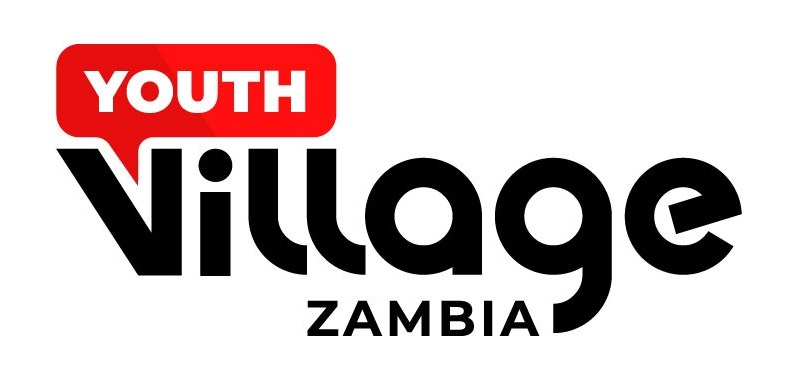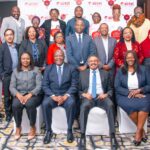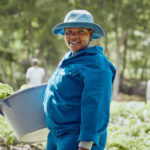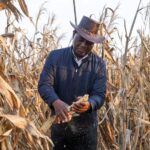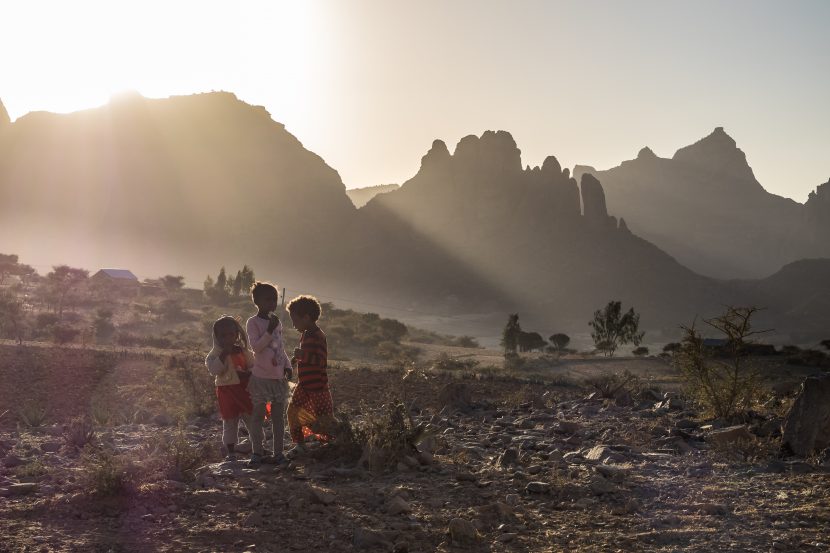CASE_AFRICA_ARTICULO_V4.docx
Hundreds of thousands of Tigrayans have been silently displaced, abused and subjected to atrocious actions by the Amhara region. Children, women and men have not only lost their homes and loved ones, but also their dignity and human rights. This ethnic war has resulted in the children of West Tigray being left without education, losing their homes and suffering from malnutrition and hunger since the conflict began in November 2020.
Think Agency is working on its new research project, based on interviews and statements of international journalists. What is infodemia?, a phenomenon related to a certain type of journalism that endangers human rights, including the right to truthful and responsible freedom of information, for people all over the world.
The first episode of this investigative series is based in the Horn of Africa.
What is happening in Ethiopia
Tigray region is a state belonging to northwestern Ethiopia bordering Eritrea to the north, Sudan to the west, Amhara region to the south and Afar region to the east and southeast. In 1990, western Tigray, bordering Sudan and Eritrea, was added to the Tigray region, which had just been constituted as a state and was a fertile territory for border and identity conflicts. This conflictual environment reached its peak when Amhara region officials allied their forces with Ethiopian federal troops to take control of western Tigray in November 2020.
Children in the Tigray region, suffering from hunger, violence, lack of health care and education, family uprooting, forced relocation and constant trauma, have been deeply affected by this conflict. In fact, more than 1.7 million children and adults have been displaced as a result of this conflict. Children have witnessed the horrific actions committed against their parents and families, and have often been the very victims who have not been spared from this barbaric ethnic cleansing.
Since the conflict began in the western Tigray region, there have been many humanitarian restrictions. The Ethiopian government suspended many aid operations, blocked humanitarian support routes and caused communications blackouts. These restrictions have led to a widespread man-made famine that is now considered one of the harshest in the world.
However, in early April 2022, humanitarian aid arrived in the Tigray area to provide food and other humanitarian supplies to the people of Tigray (United Nations, 2022). “WFP (World Food Programme) has finally been able to meet the food needs of more than 800,000 people in Tigray” (United Nations, 2022). While this represents a step forward in humanitarian aid for this region, this aid has only reached 40% of all women and children in northern Ethiopia (United Nations, 2022).
In addition, according to the organization, more than 20% of children under the age of five and half of pregnant and lactating women continue to suffer from malnutrition. Moreover, the effects of the Ukrainian war that began
in early 2022 have only intensified the food crisis in western Tigray and the rest of Ethiopia, as the country provides more than three-quarters of WFP and government wheat (United Nations, 2022).
At the onset of the conflicts in western Tigray, the response of the international community was described as “lukewarm” (Amnesty International, 2021). The African Union and neighbouring countries did not do enough to draw attention to the situation in the affected region. Other organisations requested, unsuccessfully, access to the Western Tigray region to verify the facts of the situation in this area that the Ethiopian government neglected.
After the outbreak of the conflict in November 2020, international media access was allowed in February 2021 and several reports began to flow documenting what was happening in the Western Tigray region.thanks to these independent investigations, allegations were confirmed and a global message was sent. Since then, international organisations have been trying their best to reach this region and provide the affected population with food and non-food items.
The international community has been urged to respond to the conflicts in this region and assist with solutions, supplies and medical aid.
In early 2022, Ethiopia decided to end the conflicts in the north of the country and move towards long-term solutions. This would allow for a better flow of humanitarian aid and overall peace in this part of Africa. To support the humanitarian truce, the Ethiopian government has invited local rebels in the Western Tigray and Amhara regions to cease attacks and withdraw their forces from the occupied areas. Their response has not yet been received.
The Ethiopian government now has the support of the US, Canada, the UK and other Western nations whose governments continue to stress the strategic importance of northern Ethiopia.
The fact that numerous organisations and the international community are drawing attention to this conflict indicates the gravity of the situation, which has officially violated the human rights of the population.
“FREEDOM OF INFORMATION” in Africa and specifically in Ethiopia.
Freedom of information shows different faces on the African continent, where the abundance of press in Senegal (73rd) or South Africa (35th) coexists with the deafening silence of private media in Eritrea (179th) or Djibouti (164th).
In recent years, the right to information has been further eroded by the profusion of repressive laws criminalising online journalism. In turn, the proliferation of rumours, propaganda and disinformation has weakened journalism and access to quality information.
African media, often without institutional support and still largely dependent on the editorial dictates of their owners, have great difficulty in developing sustainable and lasting models. However, the recent emergence of coalitions of investigative journalists is enabling important exposés on issues of public interest.
According to independent international bodies, press freedom in Ethiopia has deteriorated with the detention of at least 63 journalists – eight of whom are still under arrest – since the beginning of the war between the government and rebels in the northern Tigray region in November 2020, warns the Committee to Protect Journalists.
In return, there are international media outlets, such as Voice of America, that are treated favorably, in part by justifying and supporting the Ethiopian government’s actions. “The 21 months of war in Ethiopia is accelerating the deterioration of press freedom in this Horn of Africa nation.”
Although censorship and repression of journalists have been common practice in the past in Ethiopia, hostility towards reporters has increased in the last two years since the outbreak of the conflict.
Other colleagues have also suffered attacks, such as the February 2021 raid by alleged intelligence agents on the home of independent journalist Lucy Kassa – who documents human rights violations in the conflict – or the case of journalist Abebe Bayu, who was abducted and beaten.
CPJ has also recorded the murder of two Ethiopian reporters in 2021: Sisay Fida, in Oromia – whose death was attributed to the armed group Oromo Liberation Army (OLA) – and Dawit Kebede Araya, in Mekelle, the capital of Tigray.
The international press has also been in the crosshairs of the Ethiopian authorities, as evidenced by the expulsion in May 2021 of The New York Times correspondent Simon Marks and the reporter for the British weekly The Economist, Tom Gardner.
Who is Jason Patinkin?
I like to say “first the human being, then the journalist”.
He currently freelances for Reuters, Al Jazeera, Vice News, Washington Post, New York Times, AP, PBS Newshour Weekend, Foreign Policy, CSMonitor, Chicago Tribune, BBC, RFI, RTE, IRIN, BuzzFeed News, Smithsonian, Quartz, Africa Confidential, The Africa Report, Lakota Country Times, CrimeThinc. and many others.
Until May 2021, he will work as a journalist for Voice of America.
Founded in 1942, Voice of America’s mission is to serve as a “trusted and authoritative source of news,” and its digital, television and radio platforms deliver news in more than 45 languages to an estimated weekly audience of more than 278 million people. The station, which has an annual budget of $252 million, says it is committed to “telling viewers the truth.”
For Ethiopians, in a country that consistently ranks in the bottom third of the World Press Freedom Index, Voice of America is often the only independent source of news in their mother tongue.
VOA has a newsroom staffed with Ethiopian experts and foreign journalists, but so far has done very little journalism on the Tigray conflict. VOA and its team of local reporters remain impassive, and many of their local colleagues, including Jason himself, have been asked to adjust their opinions and articles, and journalists from Reuters, Deutsche Welle and the BBC have also received warnings from the Ethiopian authorities for their critical reporting.
When we asked what his work at Voice of America was like, he described it as, in essence, a media outlet that investigates the news in a totally mindless way. It is a newspaper immersed in its own logic and inexorable dynamics, which has cultivated all sorts of tendencies detrimental to journalism, almost unwittingly playing a pivotal role in issues of great relevance in different parts of the African continent.
Last April, his decision to quit my job at VOA was mainly due to its editorial line, which limited his freedom as a journalist to report what was really happening in countries like Ethiopia.
In my opinion, VOA needs to be transparent, issue corrections and be critical when things are not done well. Jason said, “It is tragic and ironic that today there is a generation of highly trained and skilled journalists, but they are often banned from doing their jobs. “
Finally, he said it took his wife, who is Ethiopian, to make him more aware of how deeply all this unfair reporting hurts the Ethiopian people. And there may be even more appalling atrocities and media silence in other areas yet to be seen.
